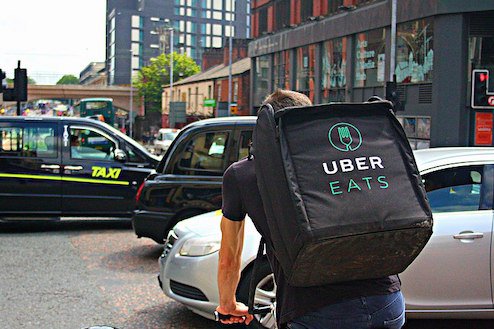Michael Felsen, Rutgers University, writes that a new Department of Labor law clarifies the definition of “employee” and puts us on the path to ensuring all workers’ rights.
According to Michael Felsen of Rutgers University, a new Department of Labor law clarifies who counts as an “employee” and directs us in the right direction for all workers ‘ rights. According to Michael Felsen of Rutgers University, a new Department of Labor law clarifies who counts as an “employee” and directs us in the right direction for all workers ‘ rights.
Michael Felsen, Rutgers University, writes that a new Department of Labor law clarifies the definition of “employee” and puts us on the path to ensuring all workers’ rights.
×. Expand. Shopblocks (CC BY 2.0). In this country, the rights you get as a worker—like overtime pay, a safe workplace, and the right to organize into a union—depend on a seemingly simple question: Are you an employee? If the answer is yes, you get a plateful of rights and protections under federal and state law. If the answer is no—meaning you’re an independent contractor in business for yourself—the plate is empty.. . When employers misclassify their employees as independent contractors, and avoid providing the rights and protections various labor laws require, individual workers get hurt. Taxpayers suffer too, with billions in revenue lost from programs like workers’ compensation and unemployment insurance.. . So how do we know who’s an employee and who isn’t? The bad news is that the answer can vary from one law to another.. . The good news is that, at least with one important law, we have a lot more clarity on how to answer the question. On January 10, the U.S. Department of Labor (DOL) issued a long-awaited regulation that addresses how to properly classify a worker under the Fair Labor Standards Act (FLSA). The FLSA, passed by Congress in 1938, set basic labor standards for employees—like a federal minimum wage and overtime pay. Its definition of who qualifies as an employee is broad.. . DOL’s new rule focuses on whether, as a matter of “economic reality,” a worker is economically dependent on an employer for work (hence, an employee), or is in business for themself (thus, an independent contractor). It makes clear, for example, that working longer and harder to make more “profit,” or buying or leasing a car because that’s what the potential employer requires, does not suggest that you’re running your own business. Meanwhile, if you perform work that’s necessary to the potential employer’s business, that indicates you’re an employee—as does the company’s use of technological and digital means to surveil and assign your work, and its ability to set wages and prices.. . The new rule replaces one from the Trump era that made it much easier for companies to treat their workers as independent contractors. In 2021, the Economic Policy Institute estimated that the Trump regulation would have reduced worker compensation (transferring it to employers) by at least $3.3 billion annually. The more than 55,000 comments the DOL received when the current rule was proposed reflect the significance—and contentiousness—of the issue in today’s ever-more-fissured economy, where efforts to sidestep employer responsibility to workers in a wide array of industries are rampant.. . Take the gig economy, for example. One in seven gig workers earn less than the federal minimum wage on an hourly basis, and almost 30 percent earn less than the applicable state minimum wage. Supposedly “in business for themselves,” one in five went hungry because they couldn’t afford enough to eat. As one expert put it, gig work has “gone from being the possibility of freedom to the certainty of insecurity.”. . The DOL rule makes clear that many gig economy workers—likely including ride-hail and delivery drivers for corporate behemoths like Uber, Lyft, DoorDash, and Instacart—are, in fact, employees, at least under the FLSA. Hence, they’re entitled to the plate of benefits that this status provides.. . All businesses need to carefully determine whether their workers are employees or not. Under the FLSA, chances are they’re going to be employees. But in case of doubt, the new DOL rule, thankfully, will help shine a light.. . This column was produced for Progressive Perspectives, a project of The Progressive magazine, and distributed by Tribune News Service.

